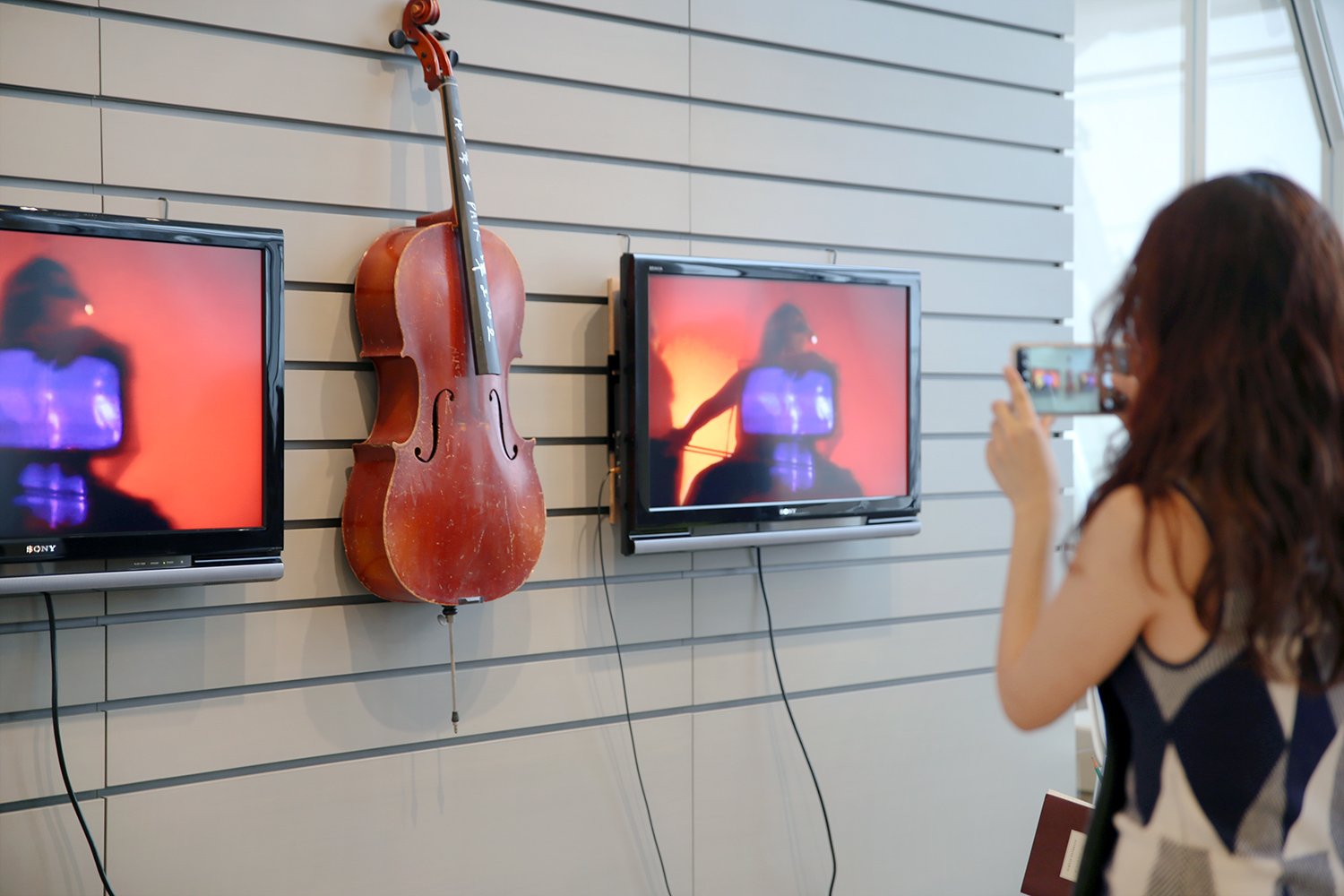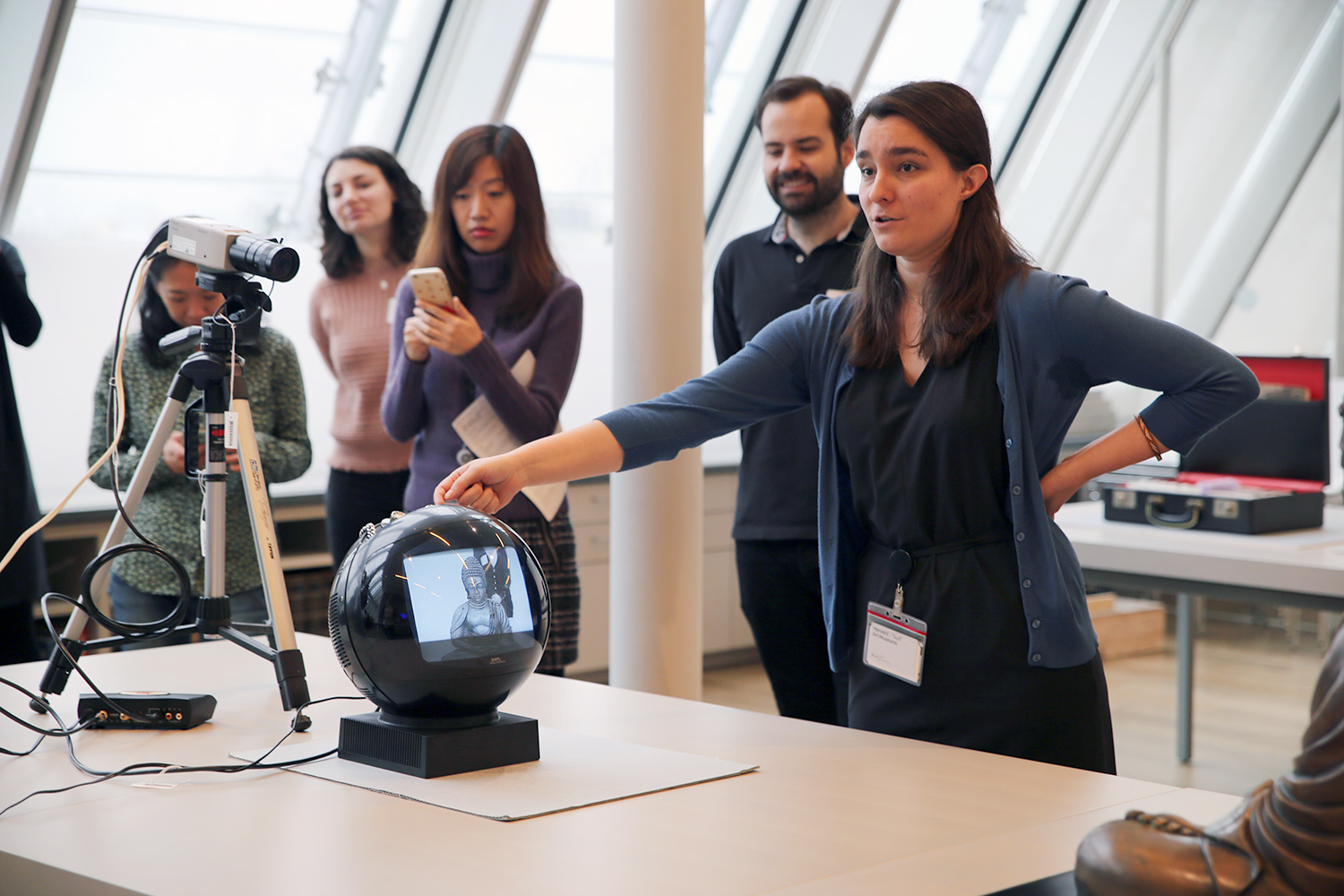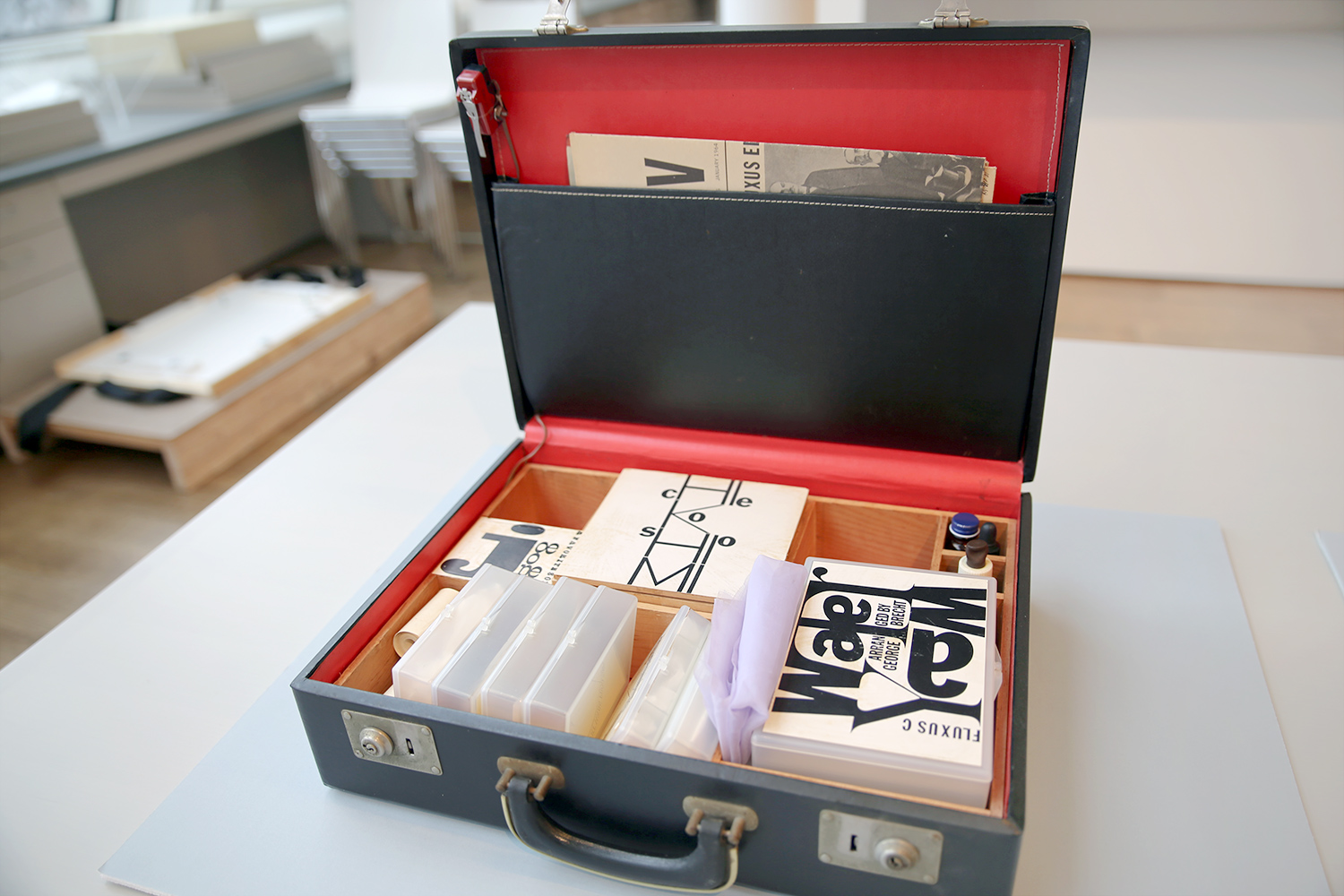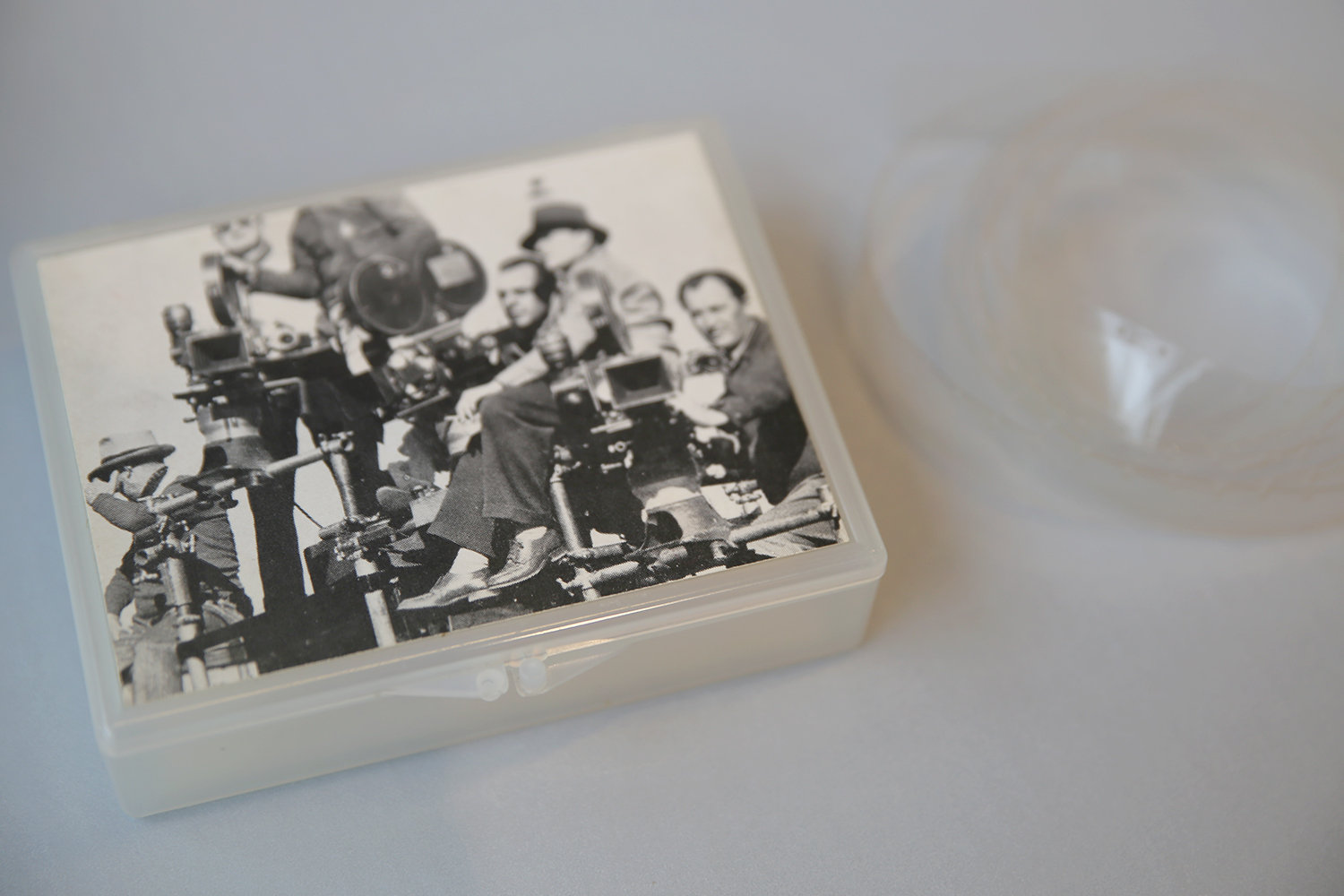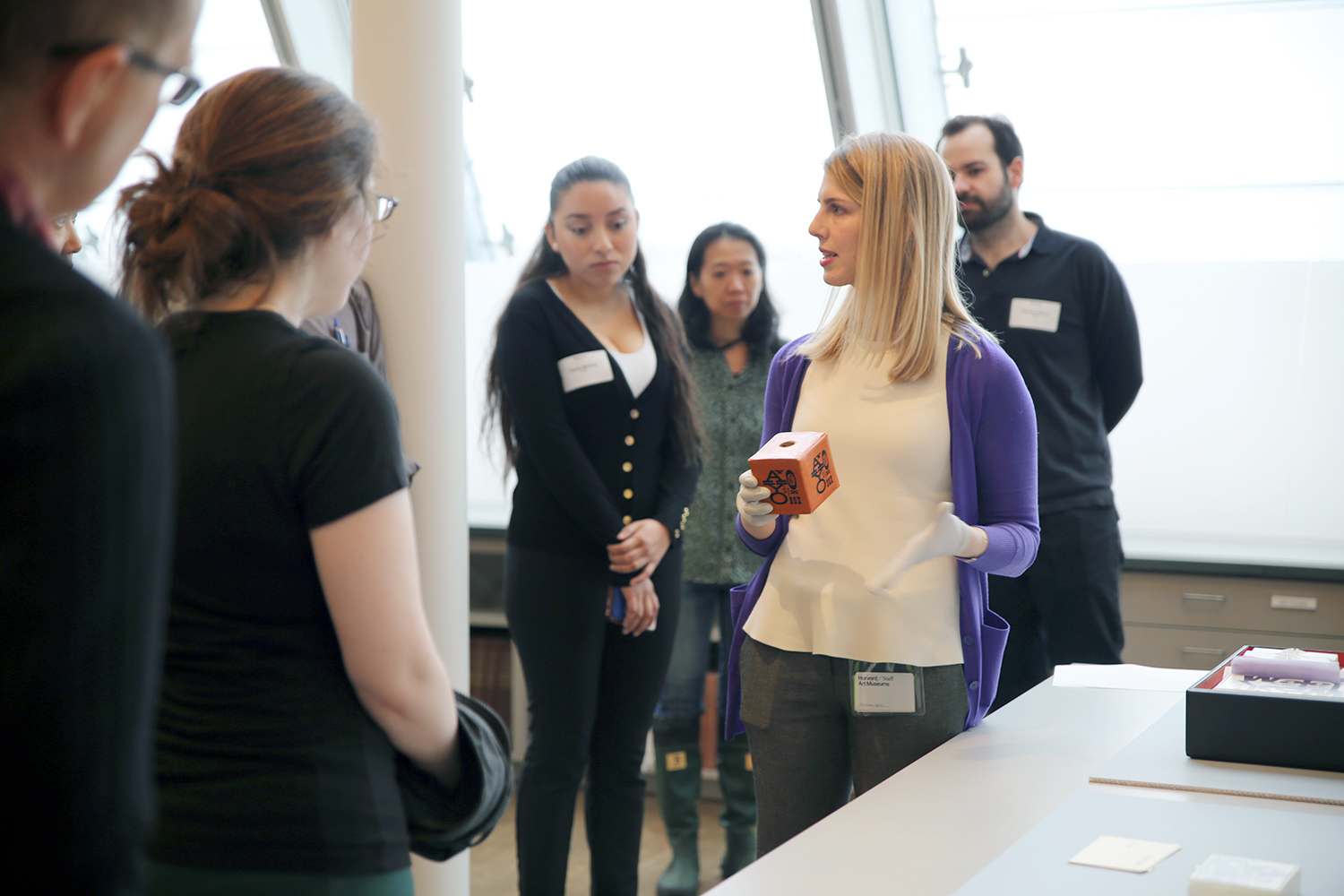Nam June Paik’s TV Buddha (2004) was recently on view for a small group of participants in an Art Study Seminar at the Harvard Art Museums.
The multicomponent object was arranged on a table at waist height so that each person could take stock of the entire work, which consists of a bronze seated Buddha statue, a closed-circuit camera, and a small, helmet-shaped TV monitor that shows live footage of the Buddha (and its surroundings). The Buddha, gazing at himself on the screen, quickly prompted discussion among group members about the idea of old versus new and the interplay of religion and technology. After the session ended, several people crouched down behind the Buddha and snapped photos of the live TV monitor facing them—which was broadcasting the participants themselves, looking straight over the shoulder of the Buddha and into the camera.
Set to be shown in the upcoming exhibition Nam June Paik: Screen Play (June 30–August 5, 2018), TV Buddha, along with several other works, will likely inspire more selfies by museum visitors. Indeed, Paik’s art seems especially suited to today’s technology-obsessed society, even more than a decade after the artist’s death.
“I think Paik’s work is particularly resonant right now,” said Marina Isgro, the 2017–19 Nam June Paik Research Fellow. She is co-curating the exhibition with Mary Schneider Enriquez, the Houghton Associate Curator of Modern and Contemporary Art. “You can interpret TV Buddha in a variety of ways, but one of them is as a meditative experience of looking at and contemplating one’s self-image.” Isgro led the Art Study Center Seminar on Paik, together with conservation fellow Madeline Corona.
